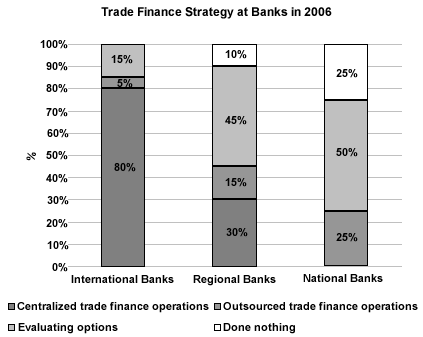Trade Finance at Regional Banks: What Are the Options?
Abstract
Paris, France September 21, 2006
During the past five to ten years, the trade finance business has changed dramatically. New technologies, and the acknowledgement by leading players that trade finance tools needed some nip and tuck, have puzzled market participants.
In a new report, Celent examines the strategic options for regional banks that want to remain in the trade finance business. The report explains why the question of trade finance's future is crucial, and it provides detailed information and analysis of the strategies to revamp trade finance departments (especially centralizing trade finance operations) and the steps to implement it. The report also includes three short case studies of trade finance strategy.
According to Axel Pierron, Celent analyst and author of the report, "Leading trade finance specialists, such as ABN AMRO, JP Morgan, and the like, are betting on acquiring market share from regional banks either in a friendly way by insourcing other banks' trade finance operations and in a more aggressive way by starting a war on price and services. This leaves many regional banks puzzled about what should be their trade finance strategy, and wondering if there is a future for them in that business."

The banking community feels the winds of change in the trade finance business. Very few banks, regardless of their size, are doing nothing to change their trade finance operations. According to their future strategy regarding trade finance, banks have three main choices: centralising trade finance operations, outsourcing trade finance operations, or doing nothing.
Pierron adds, "In order to compete in the trade finance space, regional banks need to leverage their existing assets, such as customer relationship, granular networks, and expertise, by centralising their trade finance operations. This will dramatically increase the quality of customer service and open opportunities for strategic development, not to mention achieve tremendous cost savings."
Cost savings should not be the only aim of trade finance centralisation, but Celent estimates that a bank could decrease its transaction cost by 13% and its IT management costs by 18% through implementing such a strategy.
The 49-page report contains 22 figures and one table. A table of contents is available online.

